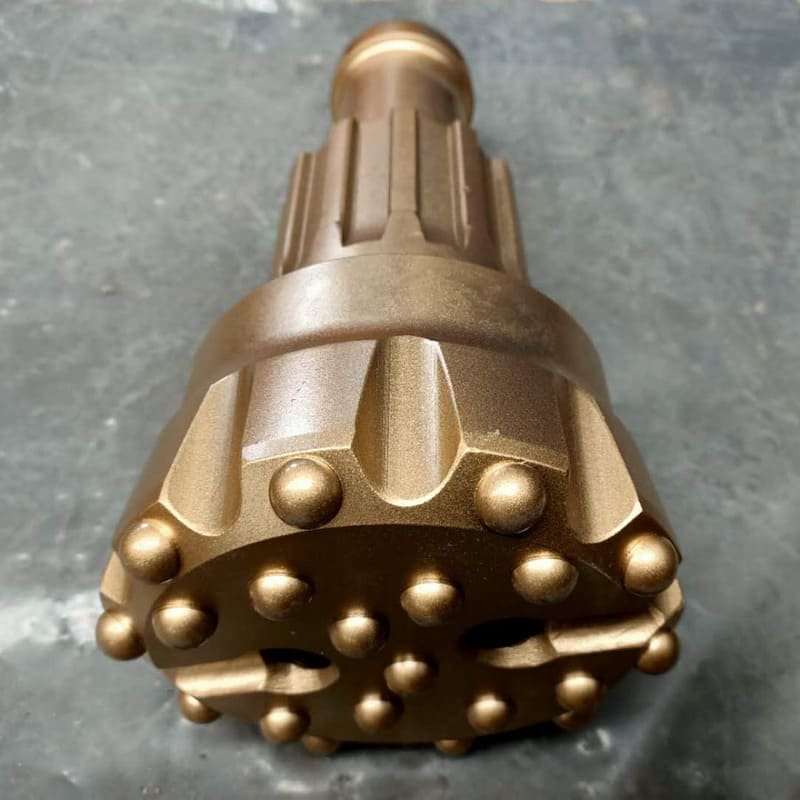Ever wondered how customizing DTH drill bits could revolutionize your drilling projects?
When customizing DTH drill bits, I consider rock formation characteristics, equipment compatibility, drilling parameters, bit life and durability, project specifics, and cost considerations to enhance performance and manage expenses.
I remember standing at a rugged site, facing challenging rock formations that seemed impossible to penetrate. That's when I realized how crucial it is to tailor each drill bit to its specific task. Beyond the basics, it's about understanding how each factor, from rock type to budget constraints, can significantly impact your drilling efficiency and project success. By delving into these nuances, I've uncovered ways to not only improve performance but also streamline costs, ensuring each project runs smoother than the last.
Rock formation affects DTH drill bit customization.True
Different rock types require specific bit designs for optimal performance.
Equipment compatibility is irrelevant in DTH bit customization.False
Ensuring compatibility prevents equipment damage and enhances efficiency.
How Do Rock Formation Characteristics Influence Drill Bit Design?
Have you ever wondered why some drill bits seem to last forever, while others wear out in no time?
Drill bit design is heavily influenced by rock formation characteristics such as hardness, abrasiveness, and fracture toughness. By tailoring the bit materials and configurations to these traits, we can significantly enhance drilling efficiency and longevity.

Hardness and Abrasiveness
You know those times when you're trying to drill through a really hard surface, and it feels like you're getting nowhere fast? That’s because harder rocks can really chew up drill bits unless they're made from the toughest materials, like tungsten carbide. I've learned that abrasive rocks are particularly sneaky, wearing down bits quicker than you'd expect. Choosing the right carbide grades1 makes all the difference, cutting down on costly maintenance and replacements.
Fracture Toughness
Imagine driving on a bumpy road where you suddenly hit an unexpected pothole. That's how drilling feels in formations with high fracture toughness. Drill bits need to be robust enough to handle these sudden jolts without cracking. Reinforced designs and advanced face geometries2 have saved the day more times than I can count.
Geomechanical Properties
Different rocks react differently to energy transfer. It's like how some people jump at the slightest noise while others barely flinch. Bits designed for elastic rocks need different configurations compared to those used in brittle environments. This ensures the bit works harmoniously with the drilling environment3, maximizing efficiency.
Case Study: Tailored Designs
I remember working on a project in a region with all sorts of geological quirks. By customizing our drill bits based on precise rock characteristics, we saved big on costs and boosted performance. Using a handy chart to compare properties like density and mineral composition with standard designs guided us in adapting button shape and distribution4.
| Rock Property | Drill Bit Feature | Impact |
|---|---|---|
| Hardness | Tougher carbide inserts | Reduced wear |
| Abrasiveness | Specialized coatings | Prolonged bit life |
| Fracture Toughness | Reinforced shank design | Improved durability |
| Elastic Modulus | Adaptive energy transfer design | Enhanced drilling efficiency |
Environmental Considerations
Environmental factors like temperature, moisture, and altitude can throw unexpected challenges at us during drilling. For instance, bits in high-moisture areas need water-resistant coatings5 to prevent corrosion and maintain integrity. It's fascinating how each element influences bit design to match specific rock characteristics, proving just how critical it is to align designs with geological data for optimal performance and longevity.
Hard rocks require tungsten carbide drill bits.True
Tungsten carbide is used for its toughness to withstand hard rock drilling.
Elastic modulus has no effect on drill bit design.False
Elastic modulus affects energy transmission, influencing bit configuration.
Why is equipment compatibility crucial when customizing drill bits?
Picture this: you're in the middle of a crucial drilling project, and suddenly everything grinds to a halt. Why? Because your drill bits weren't compatible with your equipment. Let's explore why getting this right is so essential.
Ensuring equipment compatibility when customizing drill bits optimizes performance and extends their lifespan. It aligns the drill bit with the hammer and rig specifications, enhancing drilling efficiency and reducing operational costs.
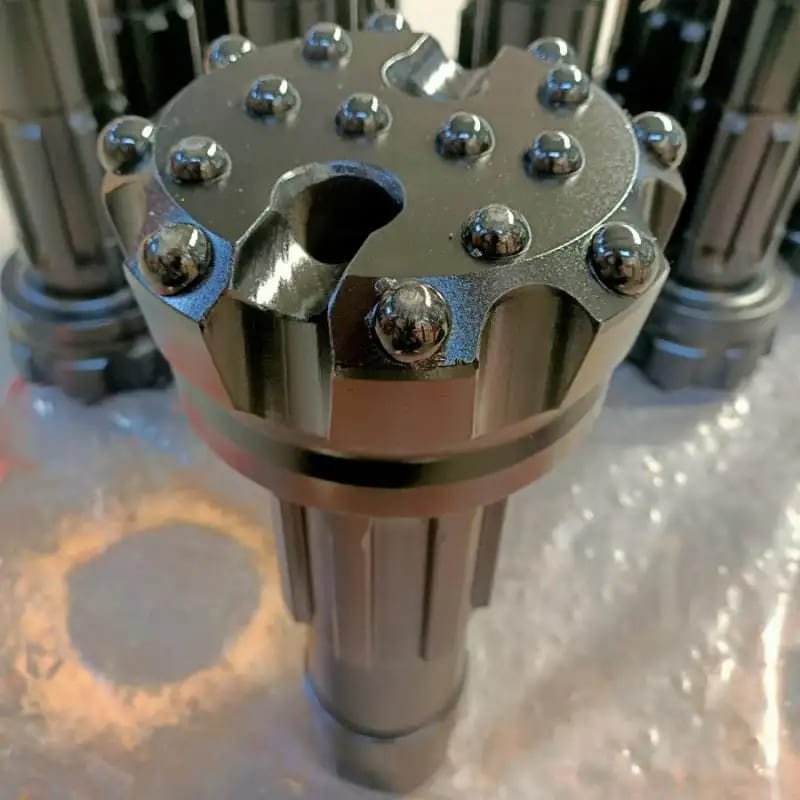
The Role of Equipment Compatibility
I’ve been there—standing on-site, watching my team struggle with a drill bit that just doesn’t fit. It’s not just frustrating; it’s costly. Ensuring that customized drill bits align with existing equipment is essential. Compatibility means that the energy transfer from the drill rig and hammer works seamlessly, allowing operations to run smoothly with less wear on parts. This alignment ultimately prolongs the life6 of both the bit and the machine.
Hammer and Bit Alignment
Imagine trying to fit a square peg into a round hole. That’s what mismatched drill bits and hammers are like. If they don’t match, energy transfer suffers, leading to excessive wear on both components. I learned this the hard way on a project where downtime became a regular frustration. Matching your drill bit to the hammer size and type is crucial for maintaining efficiency and longevity.
| Factor | Importance |
|---|---|
| Hammer Size & Type | Ensures proper energy transfer |
Drill Rig Specifications
Understanding your rig’s power output and hydraulic capabilities can save you from headaches down the line. I once used a bit too aggressive for my rig, and it was like trying to run a marathon in dress shoes—painful and inefficient. Custom drill bits should be tailored to handle your rig's power without causing unnecessary strain or damage.
| Factor | Importance |
|---|---|
| Rig Power Output | Avoids undue strain or inefficiency |
Adapting to Environmental Conditions
I recall a project where unexpected underground water transformed our drilling plans into a logistical nightmare. Environmental factors like water presence or extreme temperatures can affect bit performance significantly. Customizing bits to these conditions ensures they remain efficient and durable. For instance, wet conditions might necessitate enhanced corrosion resistance features.
Avoiding Operational Setbacks
Incompatible equipment can lead to constant maintenance needs and unforeseen failures. I’ve spent more time than I’d like troubleshooting issues that could have been avoided with better equipment alignment. By ensuring all components are compatible, operations proceed smoothly, cutting down on downtime and maintenance costs7.
- Reduced Downtime: Aligning bit designs with equipment specs minimizes unexpected halts.
- Cost Efficiency: Optimized performance reduces wear and replacement frequency.
When customizing drill bits, considering compatibility is not merely an option but a necessity for efficient and cost-effective operations. Understanding these aspects helps in making informed decisions tailored to specific project needs.
Incompatible drill bits increase operational downtime.True
Mismatched components lead to frequent maintenance and unexpected failures.
Custom drill bits ignore environmental conditions.False
Customizing considers elements like water presence and temperatures for efficiency.
What Drilling Parameters Affect the Design of DTH Drill Bits?
Ever wondered how the design of DTH drill bits adapts to different drilling conditions?
DTH drill bit design is shaped by drilling parameters like rock hardness, penetration rates, and equipment compatibility. These factors guide material selection, bit face design, and button layout, ensuring optimal performance.

Rock Formation Characteristics
The type of rock we encounter on site often feels like a roll of the dice. But knowing its characteristics can turn this gamble into a calculated strategy.
-
Hardness and Abrasiveness: I once faced a particularly abrasive rock formation that seemed determined to chew through our equipment like it was made of butter. That's when I realized the value of selecting durable materials like tungsten carbide for the bit face design8. It saved us time and a whole lot of frustration.
-
Fracture Toughness: High fracture toughness rocks can be a real challenge. I've seen bits snap under pressure without the right resilient designs to manage abrupt changes in drilling resistance.
Equipment Compatibility
Matching drill bits with equipment is like finding the right dance partner. If they’re not in sync, everything falls apart.
-
Hammer Size and Type: Ensuring that air or fluid channels and shank designs align with hammer specifications9 is crucial for optimal energy transfer.
-
Drill Rig Specifications: I learned early on that a mismatch here can turn a straightforward job into an all-day affair. The drill rig’s power dictates how well it handles dynamic loads and torque.
Drilling Parameters and Bit Performance
Getting the balance right between aggression and precision is key.
-
Penetration Rates: I remember one project where high penetration rates were essential. We used aggressive button configurations to break rock rapidly, though it took some trial and error to get the shapes and patterns just right.
-
Feed and Rotation Speeds: Adjusting these speeds can make or break bit performance. I've found that tweaking them slightly can greatly enhance bit life and efficiency, which is why it's worth investing time in getting this right.
| Parameter | Impact on Design |
|---|---|
| Rock Hardness | Material choice for durability |
| Penetration Rates | Button configuration for rapid breakage |
| Feed and Rotation Speed | Dynamic load handling capabilities |
Bit Life and Durability Considerations
The longevity of a bit is often underestimated until you’ve had one fail prematurely mid-project.
-
Expected Bit Life: In abrasive environments, improved hardfacing and carbide grades become vital for extending use.
-
Maintenance Cycles: Balancing ease of replacement with operational needs was something I overlooked initially, but now it's a key consideration.
Project-Specific Needs
Every project throws its own curveballs, demanding unique solutions.
-
Drilling Depth and Diameter: Deeper drills call for designs that withstand higher pressures. Selecting the right bit size10 is critical here.
-
Environmental Conditions: Underground water or temperature variations can wreak havoc if not accounted for in customization. I've learned this the hard way—trust me.
Rock hardness dictates DTH drill bit material choice.True
Harder rocks require durable materials like tungsten carbide for effective drilling.
Drill rig power does not affect bit design.False
Drill rig power influences how a bit handles dynamic loads and torque.
How can you extend bit life and durability through customization?
Ever wondered how to get the most out of your drilling bits? Customization could be your game-changer! By tweaking bits to match specific drilling environments, you might just save on costs and boost efficiency.
Maximize bit life by tailoring carbide inserts and bit face designs to suit rock hardness, abrasiveness, and drilling conditions. This customization boosts durability and efficiency, slashing both costs and downtime.
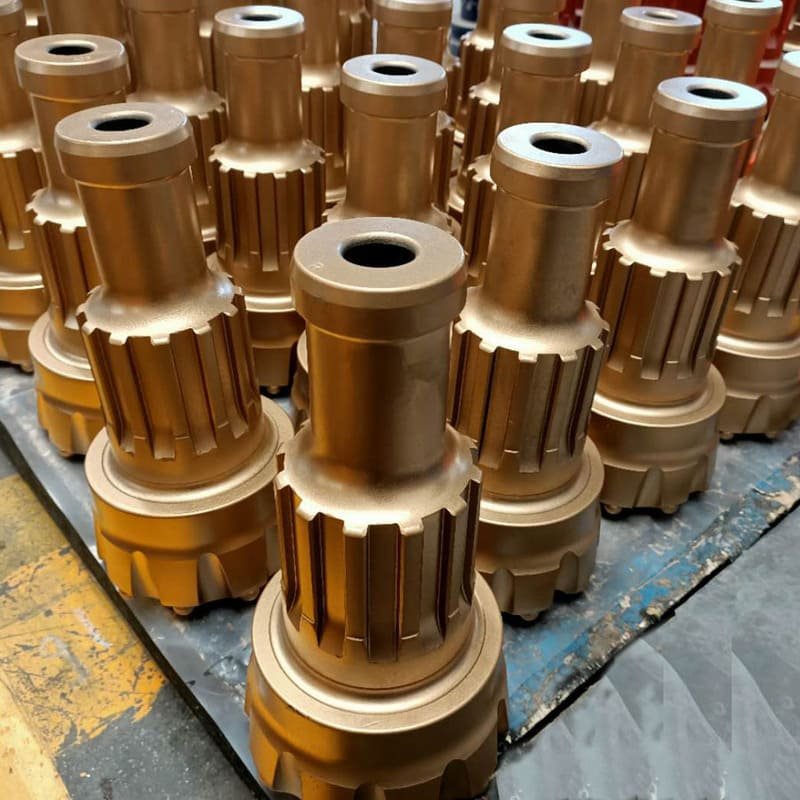
I remember the first time I tackled a drilling project. It was a steep learning curve, but one thing stood out—understanding the rock formations was key. You see, each formation tells its own story; some are hard as nails, while others crumble with ease. That's why customizing your drilling bits11 based on rock hardness and abrasiveness can be a real game-changer.
Understanding Rock Formation Characteristics
Tailoring your drilling bits12 starts with understanding the rock formations you'll encounter. Assessing rock hardness and abrasiveness is crucial. Harder rocks demand tougher carbide inserts, while softer formations may require a design that minimizes chipping.
Key Factors to Consider:
- Rock Hardness: Choose appropriate carbide grades to withstand pressure.
- Abrasiveness: Design the bit face to minimize wear.
Ensuring Drilling Equipment Compatibility
Your bit customization should align with the drilling equipment13 you're using. Mismatched specifications can lead to inefficient energy transfer and increased wear.
| Equipment Aspect | Customization Considerations |
|---|---|
| Hammer Size | Ensure bit shank matches hammer specs. |
| Drill Rig Power | Optimize bit for available power. |
Optimizing Drilling Parameters
In my experience, adjusting drilling parameters like penetration rates and rotation speeds can drastically enhance bit performance. A well-designed bit14 will handle dynamic loads efficiently, reducing operational strain.
- Penetration Rates: Faster rates require aggressive button configurations.
- Feed & Rotation: Balance speed with bit design to manage torque effectively.
Enhancing Bit Life and Durability
I've always prioritized bit longevity15 because nothing derails a project like unexpected breakdowns. High-quality materials and thoughtful design go a long way in abrasive conditions.
Maintenance Tips:
- Regular inspections to monitor wear patterns.
- Timely replacements prevent costly delays.
Considering Project-Specific Needs
Every project has unique demands. Tailor bit size and design to match drilling depth, diameter, and environmental conditions such as temperature fluctuations or water presence.
Explore Project-Specific Customization Options16
Balancing Cost Considerations
I often weigh the initial cost of customized bits against potential savings from reduced downtime and extended lifespan. It's about finding that balance where the investment pays off in the long run.
- Budget Alignment: Ensure customizations fit within project budgets.
- Long-term Savings: Evaluate potential savings from improved efficiency.
Harder rocks need tougher carbide inserts for drilling.True
Harder rocks require durable materials to withstand pressure and reduce wear.
Mismatched equipment specs improve energy transfer efficiency.False
Mismatched specifications lead to inefficient energy transfer and increased wear.
How Do Project Specifics Influence Drill Bit Customization?
Have you ever wondered how a tiny detail can make or break your drilling project?
Understanding project specifics is crucial for drill bit customization. By aligning design with geological conditions, equipment compatibility, and operational needs, you enhance drilling efficiency and save costs.
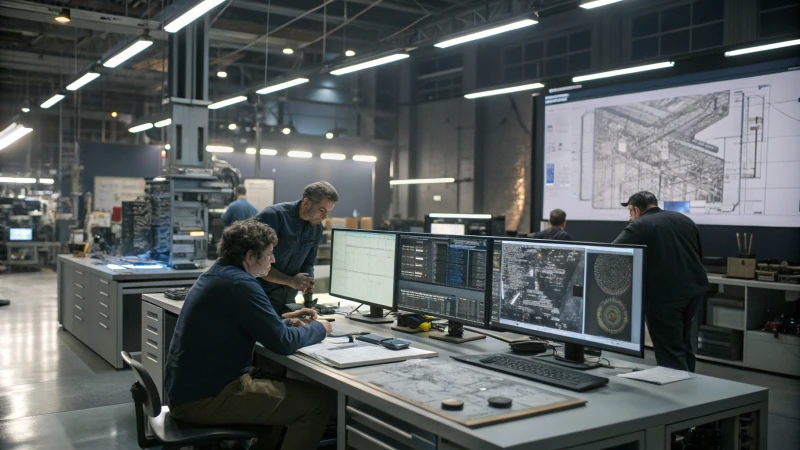
Geological Conditions
When I first got into the drilling industry, I quickly learned that not all rocks are created equal. The rock formation characteristics are key to selecting the right drill bit. I remember working on a project with particularly hard and abrasive rock. We needed tougher carbide grades to minimize wear, much like choosing the right shoes for a hike through rough terrain.
| Rock Type | Required Bit Features |
|---|---|
| Hard & Abrasive | Tough carbide, robust design |
| Soft & Fractured | Softer carbide, adaptable design |
Equipment Compatibility
I once faced a frustrating situation where the drill bit didn’t quite match the drilling equipment. It was like trying to fit a square peg in a round hole. Ensuring that the bit aligns with your drilling equipment, like matching the hammer size, is vital to avoid energy loss and inefficiency.
- Hammer Size: It dictates the air/fluid channel design.
- Drill Rig Power: It impacts bit durability and performance.
Operational Requirements
During a project aiming for high-speed drilling, we realized our bit configuration needed an aggressive button layout for faster penetration rates. Analyzing drilling parameters17 can help tailor designs that optimize load management during operations.
Cost Implications
Balancing costs is always tricky. I’ve seen advanced bit designs with higher upfront costs save money in the long run by reducing downtime. A cost-benefit analysis is your best friend when deciding on customization levels.
Environmental Conditions
Environmental challenges like underground water or extreme temperatures can be daunting. Customizing bits to withstand these conditions prevents premature wear and ensures smooth operations. Think of it as preparing for an outdoor adventure—gear up for the weather you’ll face.
| Condition | Bit Customization Focus |
|---|---|
| High Temperature | Heat-resistant materials |
| Wet Conditions | Corrosion-resistant coatings |
Understanding these aspects allows me to collaborate effectively with drill bit designers, ensuring that our drilling solutions18 meet specific project needs efficiently.
Hard rocks require tougher carbide grades in drill bits.True
Tougher carbide grades minimize wear in hard, abrasive rock formations.
Soft rocks need robust drill bit designs for effectiveness.False
Soft rocks require adaptable designs with softer carbide for efficiency.
How Should Budget Constraints Guide Your Drill Bit Customization?
When I first faced budget constraints while customizing drill bits, I realized it was all about making smart choices without breaking the bank. Let me walk you through my journey of balancing cost and performance.
Budget constraints should guide drill bit customization by focusing on essential features that enhance performance while minimizing unnecessary costs. This involves selecting the right materials and designs tailored to project demands.
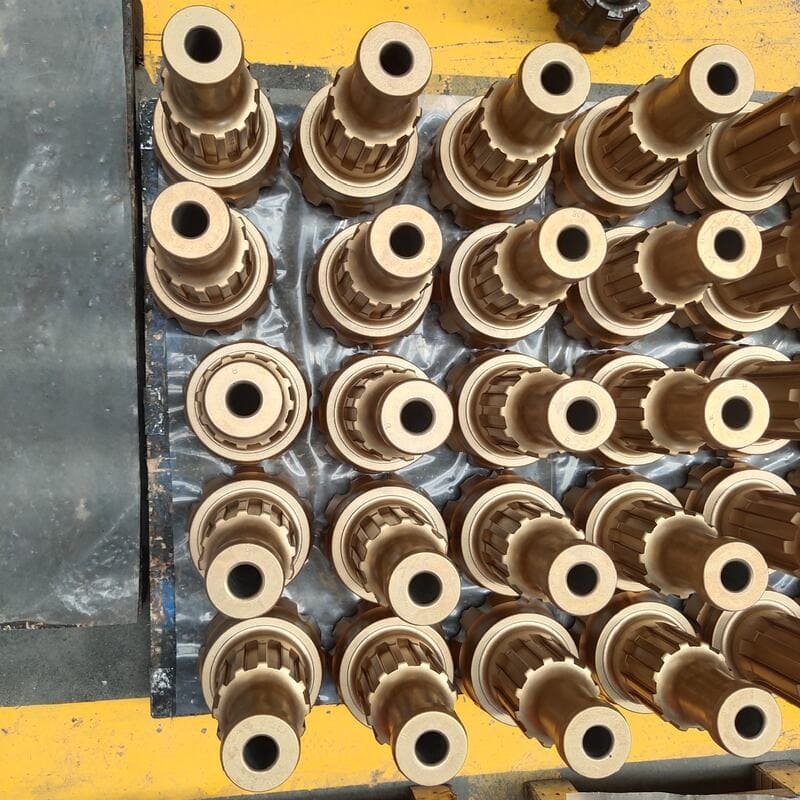
Evaluating Essential Features
When I was working on a challenging project with limited resources, I quickly learned the importance of zeroing in on the essential features of a drill bit. It was like picking the perfect tool from a cluttered toolbox. Understanding aspects like rock formation characteristics19 and equipment compatibility helped me prioritize what was truly necessary. For instance, when dealing with hard rock, investing in high-grade carbide inserts felt like buying insurance for success.
Material Selection and Cost Efficiency
I remember standing in front of shelves stacked with different materials, feeling a bit overwhelmed. But then I realized that choosing durable materials like tungsten carbide, which offers a high performance-to-cost ratio20, was like choosing quality over quantity. Sure, it might cost more upfront, but its long lifespan meant fewer replacements and less downtime.
| Material | Cost | Durability | Suitability |
|---|---|---|---|
| Tungsten Carbide | High | High | Hard Rocks |
| Steel | Medium | Medium | Soft to Medium Rocks |
Balancing Design Complexity
There was a time I got carried away with complex designs, thinking they'd solve all my problems. But they often came with hidden costs. I learned to focus on designs that improved penetration rates21 and durability without complicating things unnecessarily. It turns out simplicity sometimes holds the key to efficiency.
Cost-Benefit Analysis
One day, a colleague suggested conducting a cost-benefit analysis, and it was a game-changer. By comparing upfront costs with potential long-term savings, I could see where spending a little more could lead to huge savings later on. A detailed analysis22 helped me visualize how different customization options impacted my project's budget.
Leveraging Supplier Relationships
Engaging with suppliers can be quite enlightening. By building strong partnerships, I often found cost-effective solutions or discounts on bulk orders. Sometimes these conversations led to customized solutions that perfectly aligned with my budget and project needs. Establishing trust also meant better pricing and flexible payment terms23.
Technical Support and After-Sales Services
I can't stress enough the importance of reliable technical support and after-sales services. It's like having a safety net. Reliable support reduced operational interruptions and offered indirect savings by prolonging the bit's life through troubleshooting and maintenance assistance. It’s comforting knowing that help is just a call away.
Tungsten carbide is suitable for soft rocks.False
Tungsten carbide is best for hard rocks due to its high durability.
Complex drill bit designs increase costs.True
Complexity often leads to higher manufacturing costs and prices.
Conclusion
Customizing DTH drill bits involves considering rock characteristics, equipment compatibility, drilling parameters, and cost to enhance performance, durability, and efficiency in various drilling projects.
-
Explore the most effective carbide grades for drilling in abrasive environments to enhance bit durability. ↩
-
Learn about innovative face geometries that improve drill bit performance in fractured formations. ↩
-
Discover how geomechanical properties influence drill bit configurations for efficient energy transfer. ↩
-
Gain insights into tailoring drill bits to fit diverse geological settings for optimized performance. ↩
-
Find out how water-resistant coatings can protect drill bits in high-moisture areas. ↩
-
This link offers insights on how matching drill bits with hammer specifications enhances energy transfer efficiency. ↩
-
Explore how ensuring equipment compatibility helps minimize maintenance costs by reducing wear and tear. ↩
-
Discover how different materials enhance durability against hard rock conditions. ↩
-
Explore compatibility requirements between DTH hammers and drill bits. ↩
-
Find guidance on selecting appropriate bit sizes for deep hole applications. ↩
-
Discover how specific drill bits can enhance performance based on rock characteristics. ↩
-
Discover how specific drill bits can enhance performance based on rock characteristics. ↩
-
Learn how to match drill bits with your existing equipment for optimal efficiency. ↩
-
Understand how bit design influences penetration rates and efficiency. ↩
-
Find strategies to increase the service life of your drill bits. ↩
-
Explore customization options tailored to specific project demands. ↩
-
Understanding drilling parameters helps optimize drill bit design for better load management and efficiency. ↩
-
Collaborating effectively ensures the customizations align well with specific project requirements. ↩
-
Understanding rock formation characteristics helps select the right drill bit materials and designs, enhancing performance while managing costs. ↩
-
Materials with a high performance-to-cost ratio ensure durability and efficiency, providing long-term savings despite higher initial costs. ↩
-
Increasing penetration rates through design improvements can enhance drilling speed and reduce operational costs. ↩
-
A thorough cost-benefit analysis helps identify the most economical options by weighing upfront costs against long-term benefits. ↩
-
Negotiating flexible payment terms can ease budget pressures, allowing you to allocate resources more effectively. ↩

